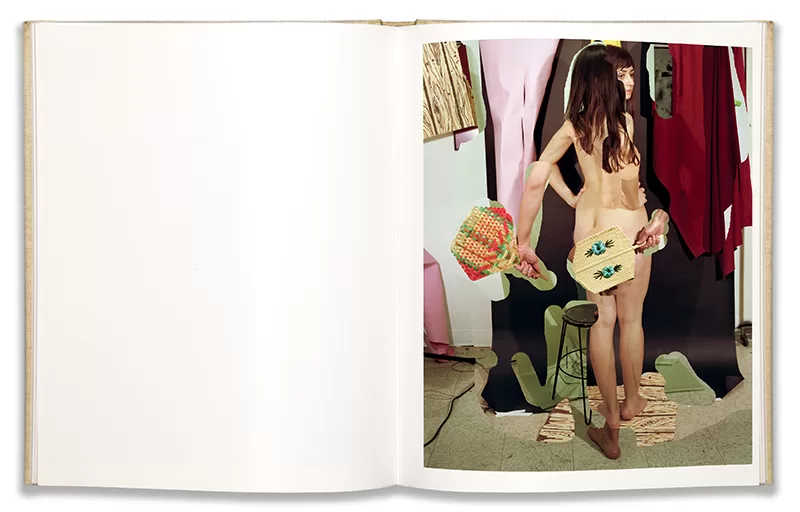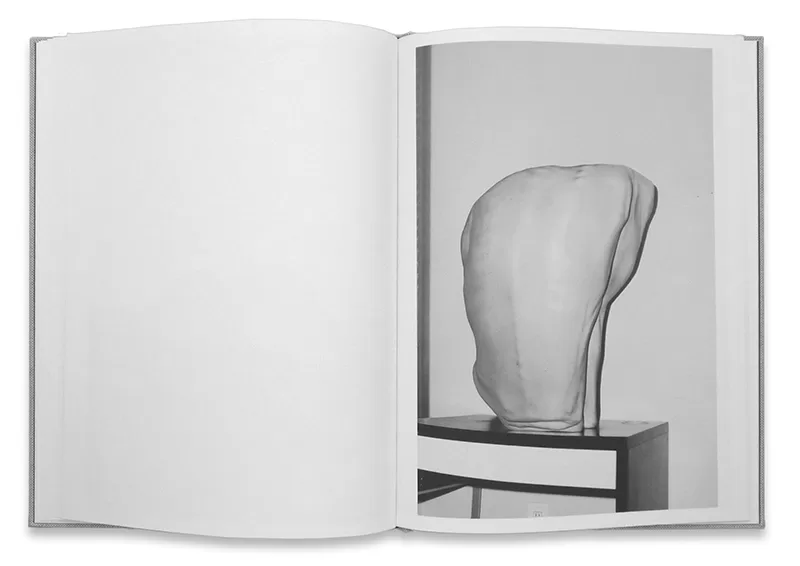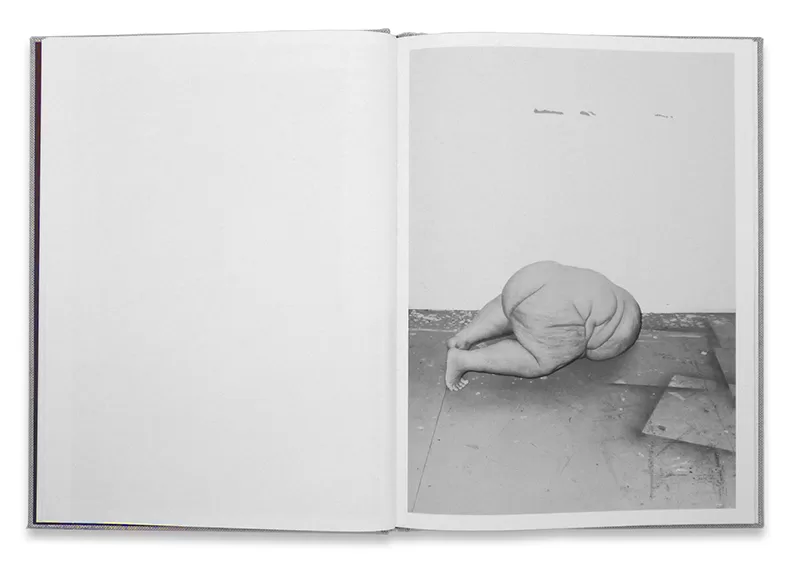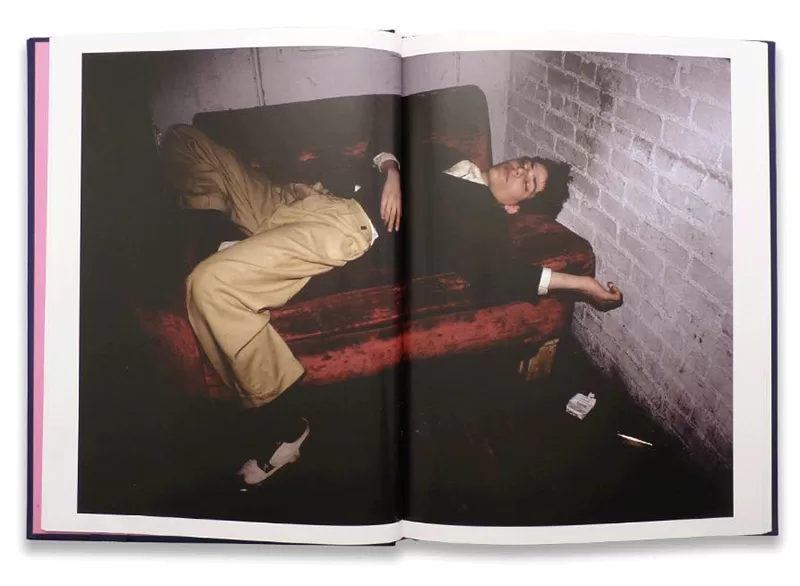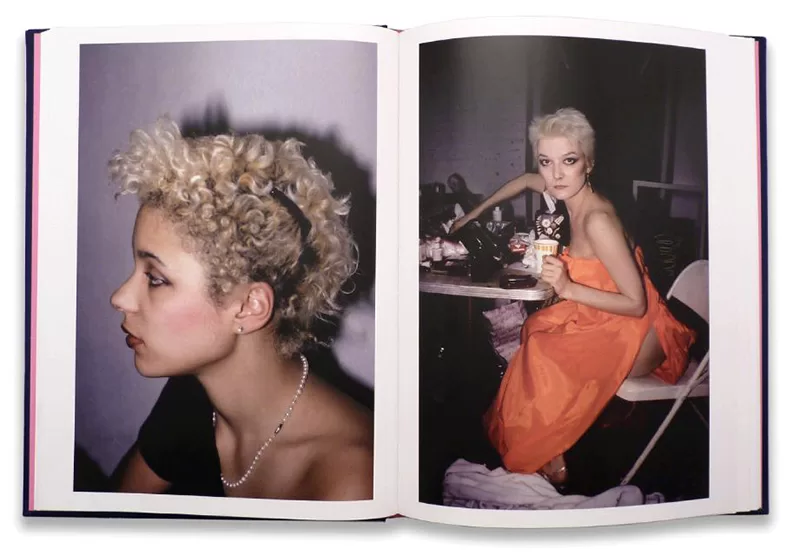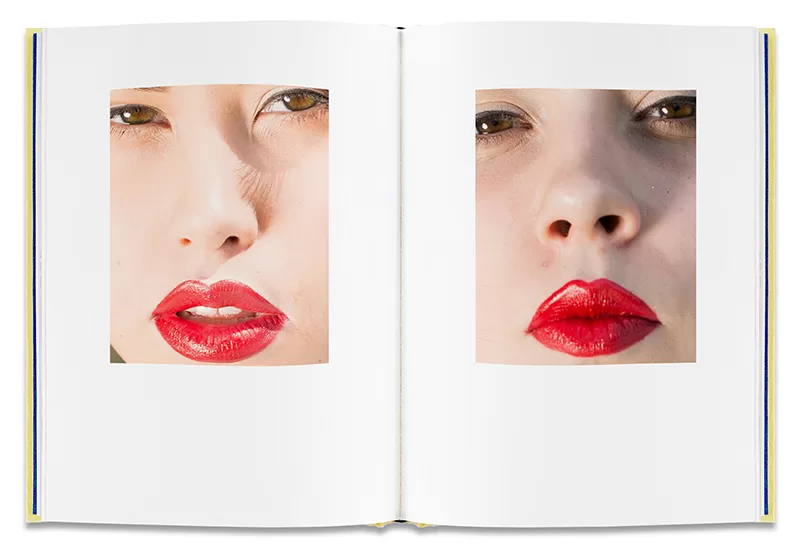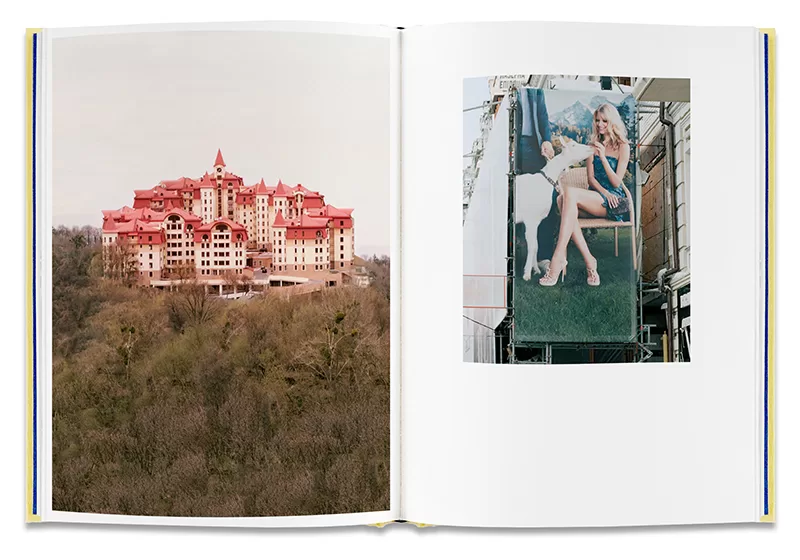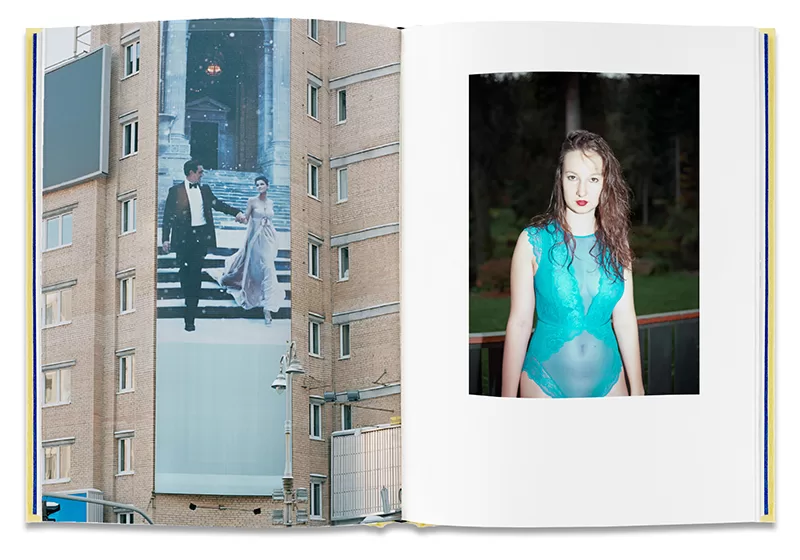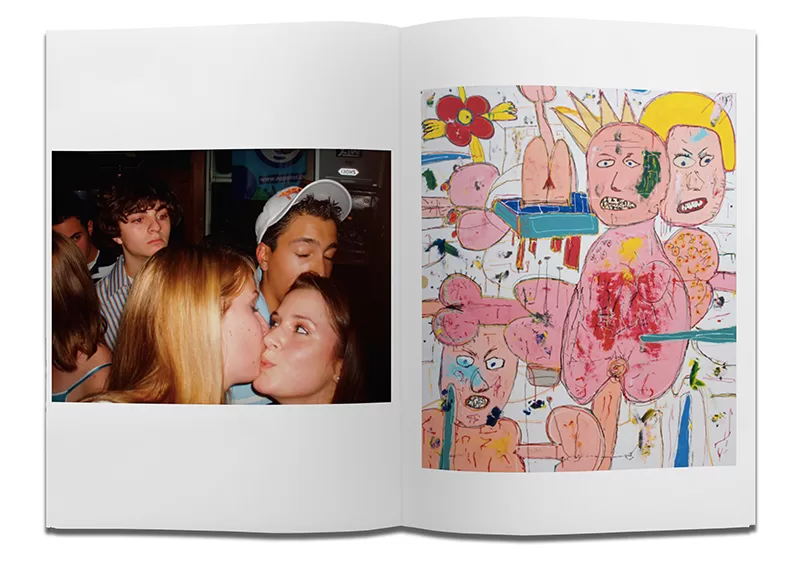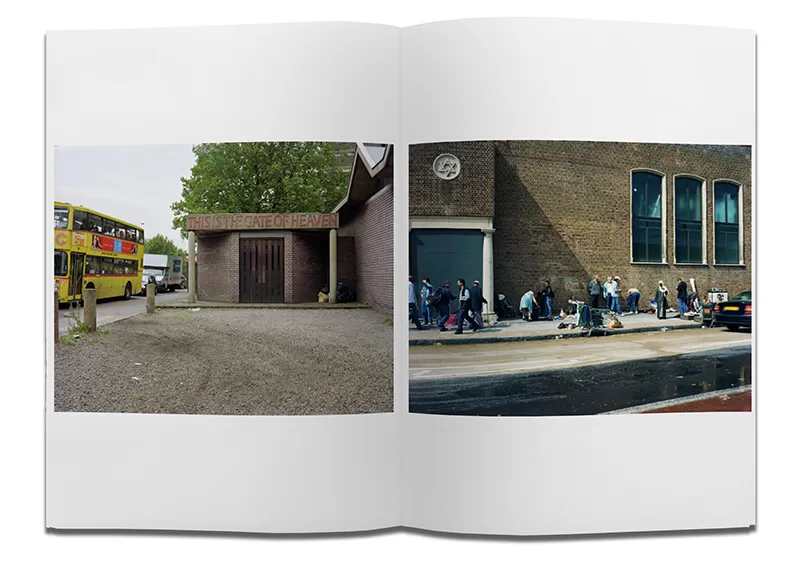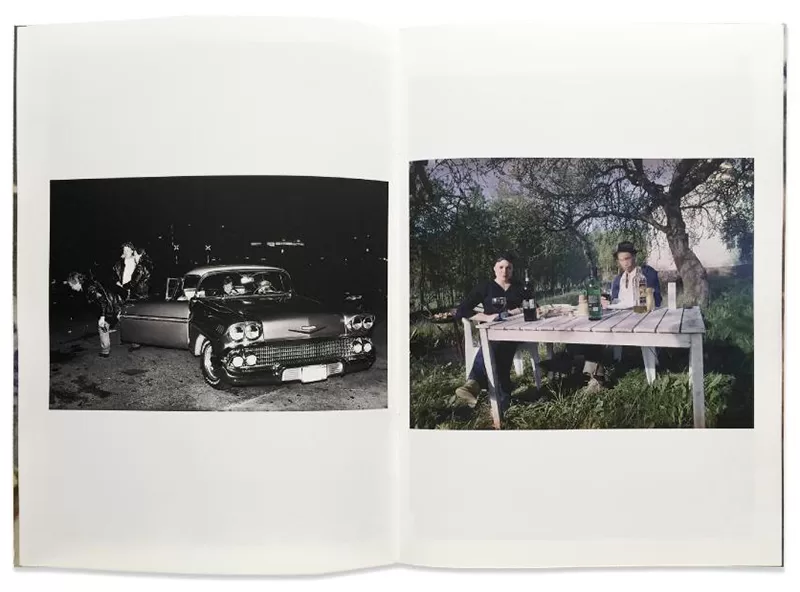Publishers series: an interview with Morel Books
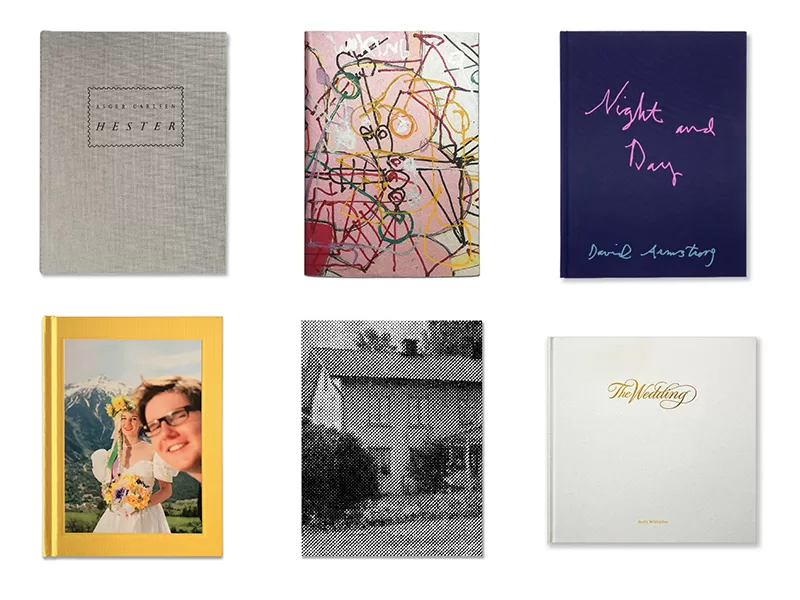
Aron Mörel, founder of Morel Books, is notable for the way he lets artists and photographers get on with it. He gives them total freedom, and you get the impression he almost hopes a project won’t turn out quite as expected. Spanning Ryan McGinley to Araki, William Blake to Boris Mikhailov, Morel’s output since 2008 is like an old city full of different quarters and winding streets. The only thing that binds it all together is a desire to stay on the pulse, to keep the medium of the artist’s book alive and healthy with new ideas.
Can you tell me about a moment of inspiration that led to Morel Books?
Well, one of the things I saw when I started around 2008 was a lot of really interesting zines, with really great photographers, really well thought out, but also keeping lo-fi elements. And at the same time there were a lot of little shops opening up which were really inspiring, be it Dashwood Books in New York, or Claire de Rouen in London. There were some shops that were really photo orientated, that had some of the larger monographs, e.g. from Taschen or Steidl or Phaidon, but alongside those would also be presenting smaller publications, down to very basic zines. So there was this time period when people started to embrace the whole photographic culture, from a lo-fi level, which was very inspiring.
How does the life of an independent publisher compare to the one you imagined?
To be honest, when I started my intentions were for it to be a bit smaller. I didn’t see where it could go. But between 2008 and now that group or network of things has massively exploded. We talked about the book shops, but also some of the book fairs, like OffPrint in Paris, last year they did their little thing, well, their big thing at the Tate during Photo London. But the first one was probably around 30 publishers or so. That’s now exploded to over 200 or 300 publishers. I think my idea was for more of a kitchen table sort of thing – would you say a cottage industry? – but then it sort of exploded phenomenally on all levels, including Morel.
You publish very different books, but could you tell me what, above all, you look for in a project?
I don’t think there is anything definitive. I could say from the day I started, my idea of what I’m interested in has completely transformed, and that’s part of the fun of it. My interests are expanding, or even sometimes contracting and going in a specific direction. At some point I was very interested in a movement that was coming out of the US, with artists like Lucas Blalock, Daniel Gordon, or Hannah Whitaker, who I did books with, and I think that was a very interesting branch of photography. But what I like is as diverse as music taste. I mean we were just listening to Sepultra and now it’s Miles Davis, and an hour ago it was Iggy Pop and Fela Kuti.
You seem to like your photography quite raw, something that captures the experience of a lived moment.
I guess that’s one part of it. I’d say JH Engstrom comes from that side, and the David Armstrong Night and Day book does that. And then there’s the Boris Mikhailov, although I think that is more indicative of something else I’m interested in, which is the fiction or the artifice of photography, the bullshit, the storytelling. Boris for example, at a show that’s happening right now at the Tate, Performing for the Camera, has this idea of a fictional landscape, which is what Asger Carlsen’s Hester and Wrong do, and Romain Mader’s book, Ekaterina.
It’s a type of narrative.
Yeah. But also narrative that doesn’t try to define itself as truth.
A lot of these books are about journeying into places, and bearing witness – Romain Mader and Boris Mikhailov, but also Chris Shaw and Ryan McGinley.
A lot of photography has a strong storytelling perspective to it, so it will take you to places. Books of photography work beautifully like that. Photography works in sequences and series, basically. With the Boris Mikhailov book [The Wedding], that’s a story. You start from the first image and you go through a series of sequences, and it has a sort of chronological perspective to it. It starts with a wedding in the streets, and then the post-wedding festivities, and then after the wedding, meeting the couple.
On the other hand, many of your projects are about the disruption and manipulation of the photographs themselves. What appeals to you about this?
I just respond to it. I think it’s interesting how people play with the medium on that level. I mean, that really goes to two different extremes, from Lucas Blalock and Hannah Whitaker, who really affect their images as part of their process, down to someone like Chris Shaw, who distresses them afterwards. And Asger Carlsen…
It’s so bizarre!
I think Asger Carlsen plays with that thing we were speaking about, going to different realms. I think you don’t notice it if you flick through them, and then you start to see the subtle manipulations. With digital manipulation, you can take things so far that it starts to look kitsch, but his playfulness with it is so subtle I think they make you double–take. It keeps things uncanny.
It appears that you admire an enfant terrible, whether that be photographers like Jonnie Craig, artists like Araki, or poets you’ve referenced like William Blake and Rimbaud.
Yeah, I guess that’s the teenager in me…
But do you think it’s important for art to challenge polite society?
Yeah, definitely. I think it’s important for art to challenge in general. I think it would be interesting to find work that has more of a political agenda. I’m not that crazy on just simple beautiful photography, I think that’s a total bore. It’s more interesting when people challenge the medium or challenge cultural perspectives.
I suppose it’s harder to shock people today.
That’s true. Although, I’m working on a book by a Surrealist from the 1930s, and when you look at the work they were doing in the ’30s, when it comes to shock, I find it far more shocking than anything I’ve ever done, or seen.
Do you often disagree with artists about presentation?
To be honest, not at all. I make the artists develop the whole process, so it’s very much their book. I never use in-house designers. If we disagree over it then I just won’t do the book, and there will be a better match somewhere else. It’s actually happened with one artist where we’ve developed the book over a two-year period, and I wanted a lot more text in the book because the artist wrote some really amazing diaries, but we could never edit that properly. At some point the artist gave the book to another publisher. He asked me and I said by all means, they’re a great publisher, and it’s a fantastic book… but I still think it needs more text!
I want to talk about the internet…
Just don’t use that word “post-internet.”
No, no… although I guess I’m going to say something similar. Do you feel that the internet has set print publishing free to become an art form, rather than just a means of packaging information?
I think the photo book stands independent of the internet, no matter what. The photo book as an artist’s object has been around basically since photography started. I think it keeps its own identity and aura to a certain degree. I don’t think the internet is instrumental in making the photo book more popular.
What the internet has enabled is desktop publishing, being able to design pre-press, and doing all of those things with such a small team. And the other element is reaching out to the general public, marketing off of social media – and using the internet to a find shops in Japan without having to fax them. Walter Keller, who used to run a publisher called Scalo back in the late ’90s, he was saying he used to travel and he used to fax everyone. I mean, did you take pictures of books and send the polaroid to a bookshop to have them understand it? Now you can be a one-man band and run a publishing company with PayPal.
I must confess I did hope a limited-run publishing operation like yours might be a way to earn a living from books again. Do you think this is realistic?
No, just focus on breaking even! I mean there are ways to make money from publishing. I think there are a lot of vanity presses out there that tend to take money from the artist, and then do the books like that. I’m not too crazy about it. If we get money put into a book, it helps reduce the retail price of the book, to make it more accessible. Like I was saying, with Walter Keller and Scalo – I think they were one of the most amazing printers, and they went bankrupt. There’s no money in it, but it’s not culturally bankrupt, and its influence on whatever the medium is that you’re publishing is quite powerful. Although, if you figure out how to make publishing lucrative, let me know.
Your experiments in publishing under time constraints are very interesting, like process-based artworks. How did you come across this idea?
I just had this idea for projects where you say look, we’ve got 48 hours to pull it off, and if it doesn’t happen within that time constraint then we just drop it. It limits budget, it makes things spontaneous and fun for the artist and for the publisher.
It started off with Engstrom, asking him to choose random images, and then I chose images from that. For Nick Walpington, I wanted to do something with his paintings and notebooks as well as photography, so on his birthday, at ten o’clock in the pub, we agreed on two hundred images. I didn’t want to be involved in the editing process, so that night we emailed Irvine Welsh and asked him to play with it. And then for Stephen Shore, I was interested in working with something from the internet, and also getting a curator [Hans Ulrich Obrist] to be involved, someone involved in social media as well as the arts.
A lot of artists and poets work that way, they’ll give themselves twenty minutes to write a poem, and if doesn’t come off, get rid of it and move on.
With Rene Ricard, who did the David Armstrong cover [for Night and Day], I remember he had a show that he knew about for a year or something, and when I saw him I think he had about two weeks left, and he hadn’t started painting shit-all. I think he did a bunch of drugs and finished everything off. That was one of his last shows before he died. He had ideas, I’m working on some of his notebooks from that year, and there you see some one-liners and sketches that were used in the exhibition. So I think he had things prepared in his mind, but that last minute deadline makes you work.
You mention the notebooks, do you like going backstage like that? Do you think that’s a good thing for books to do?
Sometimes I don’t think its necessary to show it within a project. From my side its interesting so see some of the behind the scenes, to see where we’re taking it. For a Saul Fletcher book we’re doing, we’re taking pictures of notebooks and incorporating it into the book, because they are quite interesting.
Do you see yourself as catering for a niche audience?
Photo books are a niche audience, which is a good thing. You don’t have to try to reach out to people that aren’t interested. But it’s important to keep them modestly priced, because they should be an everyman’s object. I don’t think books should be elitist, I think they’re most powerful in a student’s hands, someone whose perspective can be transformed. But if you’ve got the money, it might be more interesting to find a young emerging photographic artist and buy a series of prints off them, and get to know them properly like that. And then if they ever do a book, you’ll probably get that sent to you as well.
Where do you see this publishing house in five years, and where do you see this kind of publishing generally in five years?
I hope we’re still in London, and it would be nice to see it grow organically a little bit more. I think there’s been a massive boom of publishers, and I see a lot of people just starting to publish. I think at some point, they might realize that you’re not going to make money from it, and some people may fall out of it, but there will always be that interest. To be honest, five years ago I couldn’t see the publishing world being what it is today.
One thing I’ve noticed is the glossy magazines that used to pride themselves on being cutting-edge, they’ve been overtaken by independent publishers, a lot of them really young.
It’s weird, when it comes to magazines, I don’t look at many these days. I think it was far more cutting-edge in the 90s. I mean, one of the things that would be scary with Morel is if it did what some of those 90s magazines did, which is kind of smoothen themselves out and become part of the establishment, like Dazed or ID. It would be terrifying.
I feel like those magazines grew to a point where they were no longer nimble enough to keep up with young publishers.
Well, you know, a lot of the young magazines I’ve seen come out, I’m quite shocked because they’re not really breaking any ground. I’m not saying this is all of them, but what happened in the 90s and pre-90s was quite ground-breaking, and I think a lot of it has become complacent. I don’t see many things with enough “fuck you.”
All spreads courtesy of the artists and Morel Books
With thanks to Morel Books, until Friday 25 March Paper Journal readers can receive 20% off all available titles!
Simply enter paperjournal20 at checkout.


